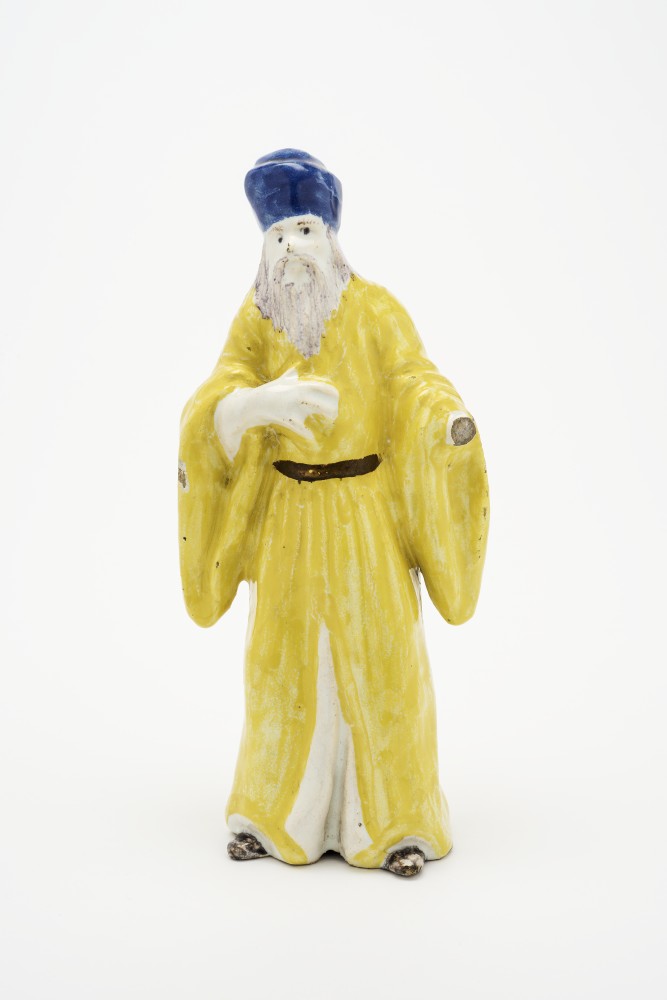Figur eines langhaarigen und bärtigen Sultans im langen, bis zum Boden reichenden, gelben Gewand mit weiten Ärmeln. Der Gürtel ist braun. Nur die Spitzen der Schuhe sind unter dem Gewand erkennbar. Auf dem Kopf trägt er einen blauen Turban. Die rechte Hand liegt auf dem Oberkörper, die Linke ist abgebrochen. Die grafische Vorlage für die Figur bildete der Kupferstich „Der Groß-Sultan im Serrail mit den Kislar Agassi“ nach Ferriol/Weigel, Nürnberg 1719.
Die linke Hand fehlt. Glasurabplatzungen am rechten Ärmel und an der rechten Schulter.
Ohne Marke
Vermächtnis F. F. Jost, Leipzig, 1907
en

